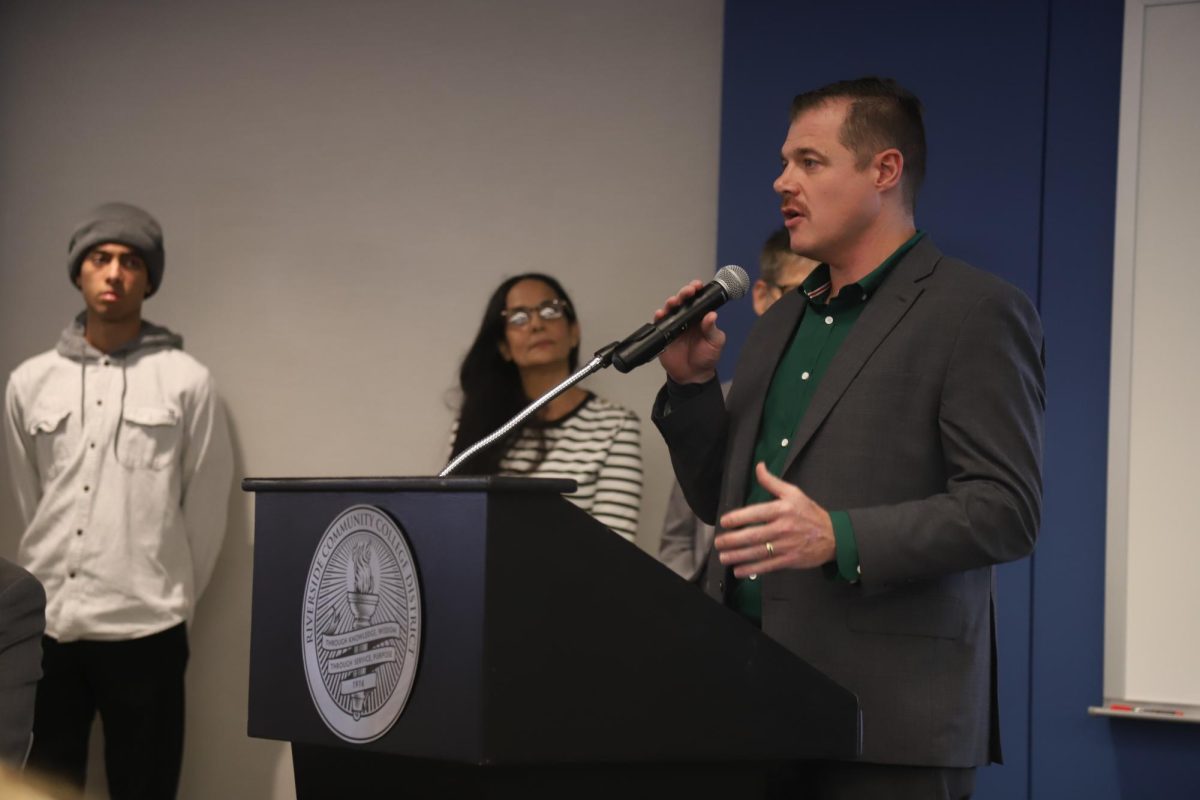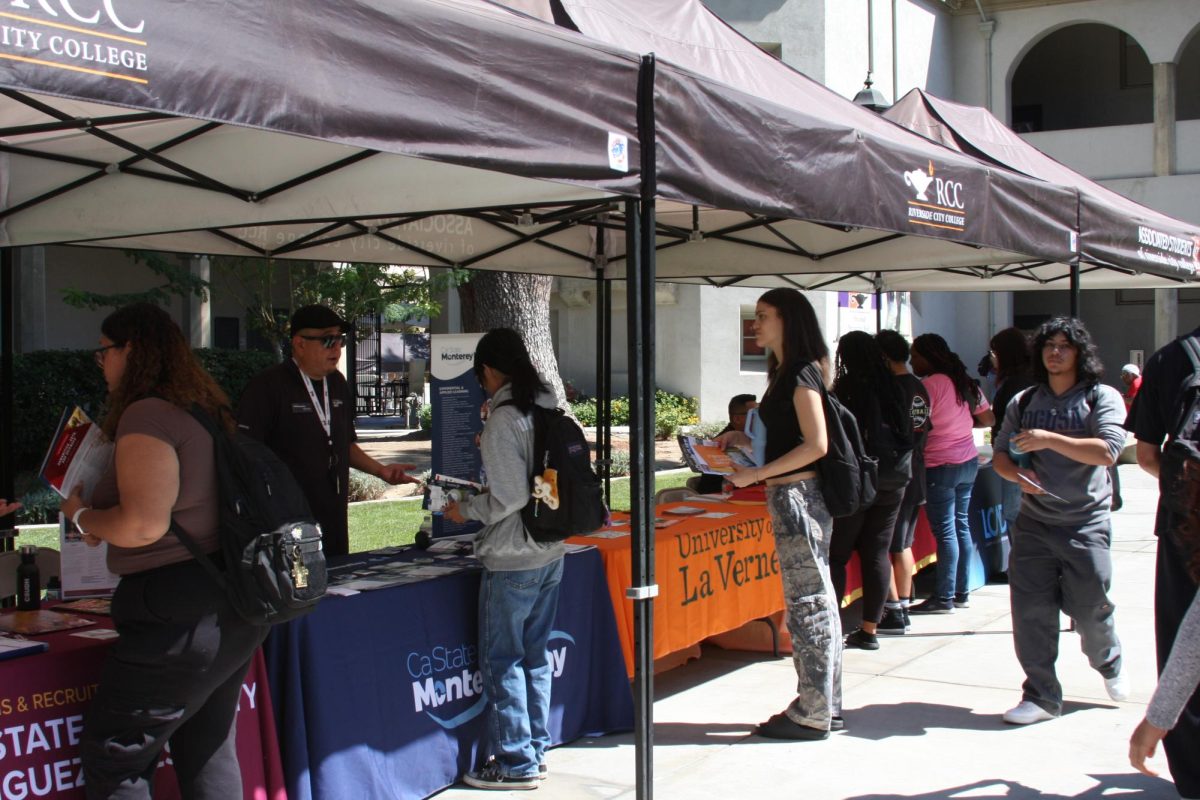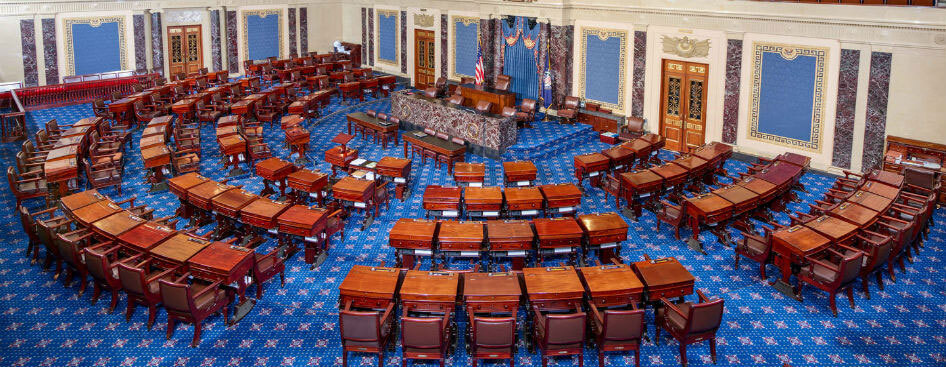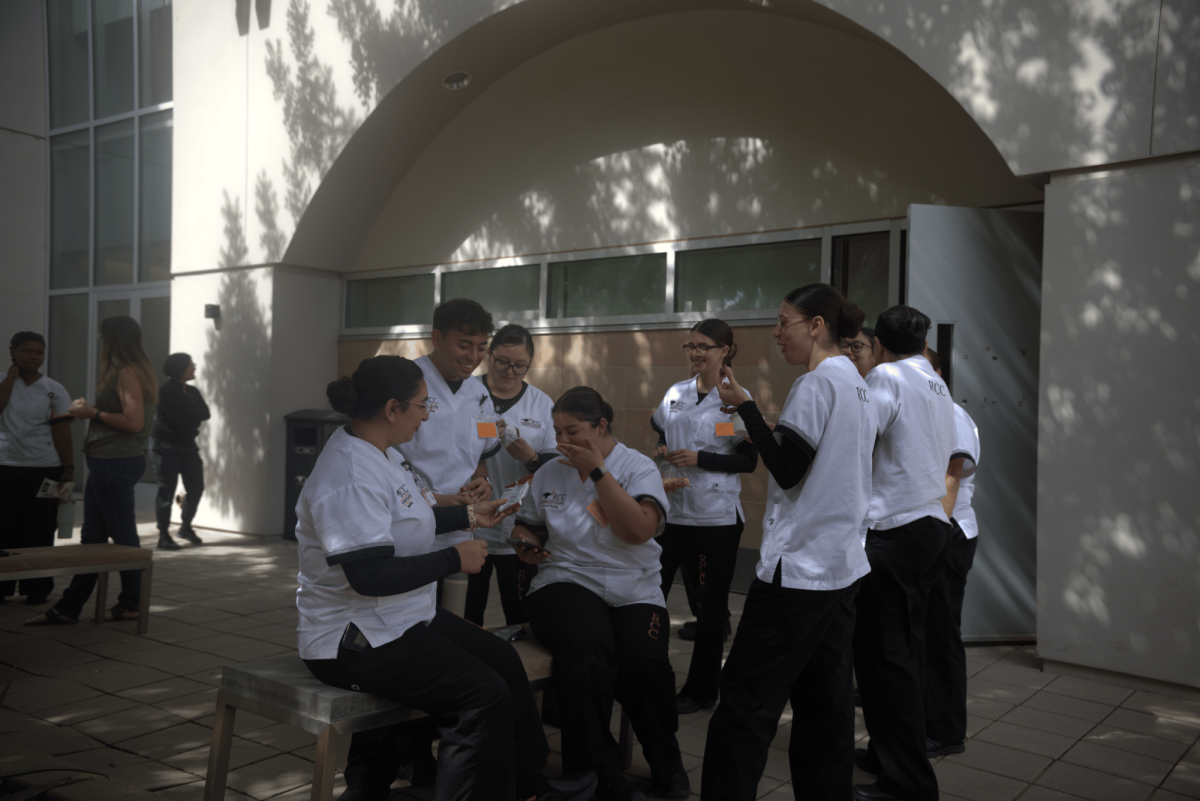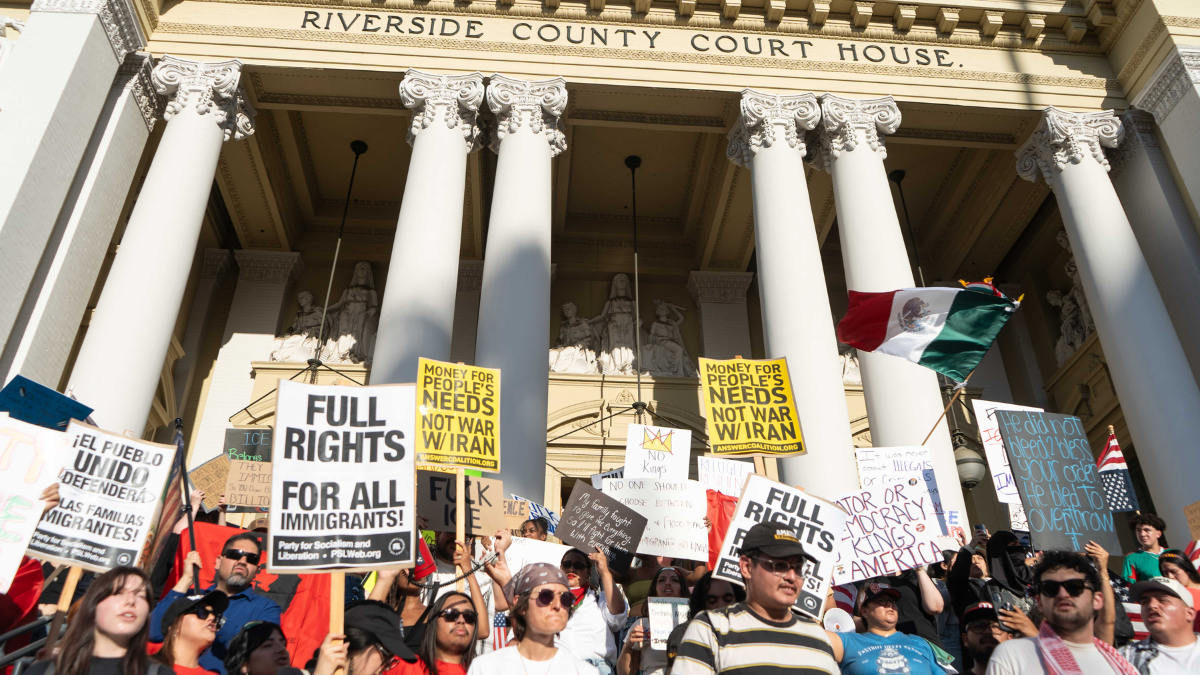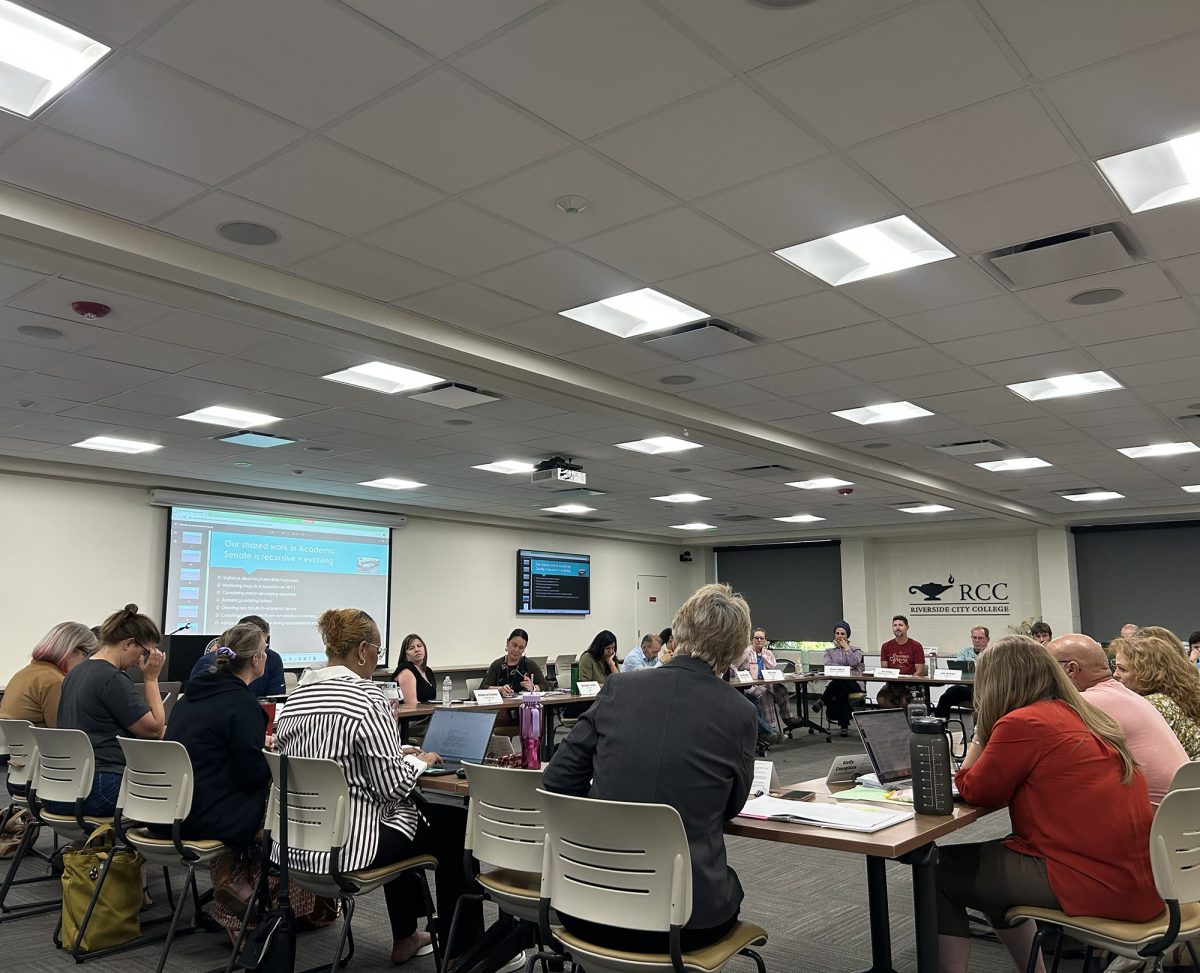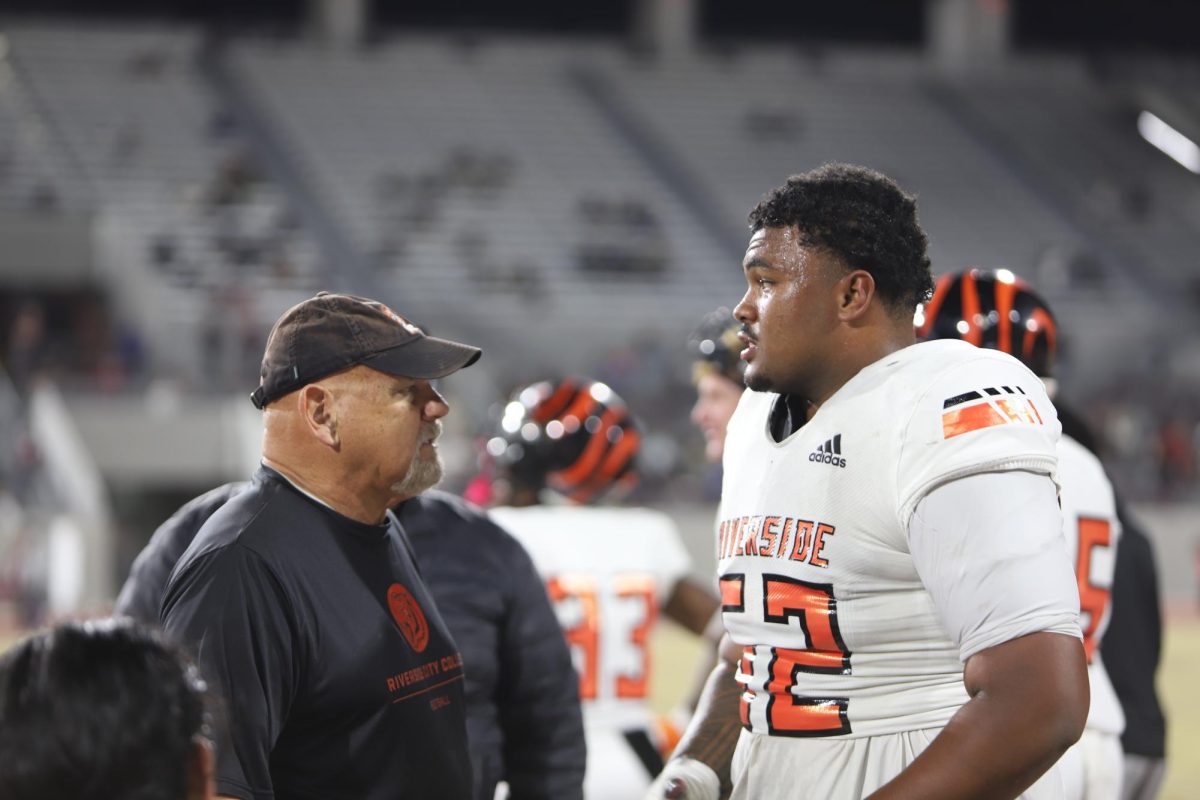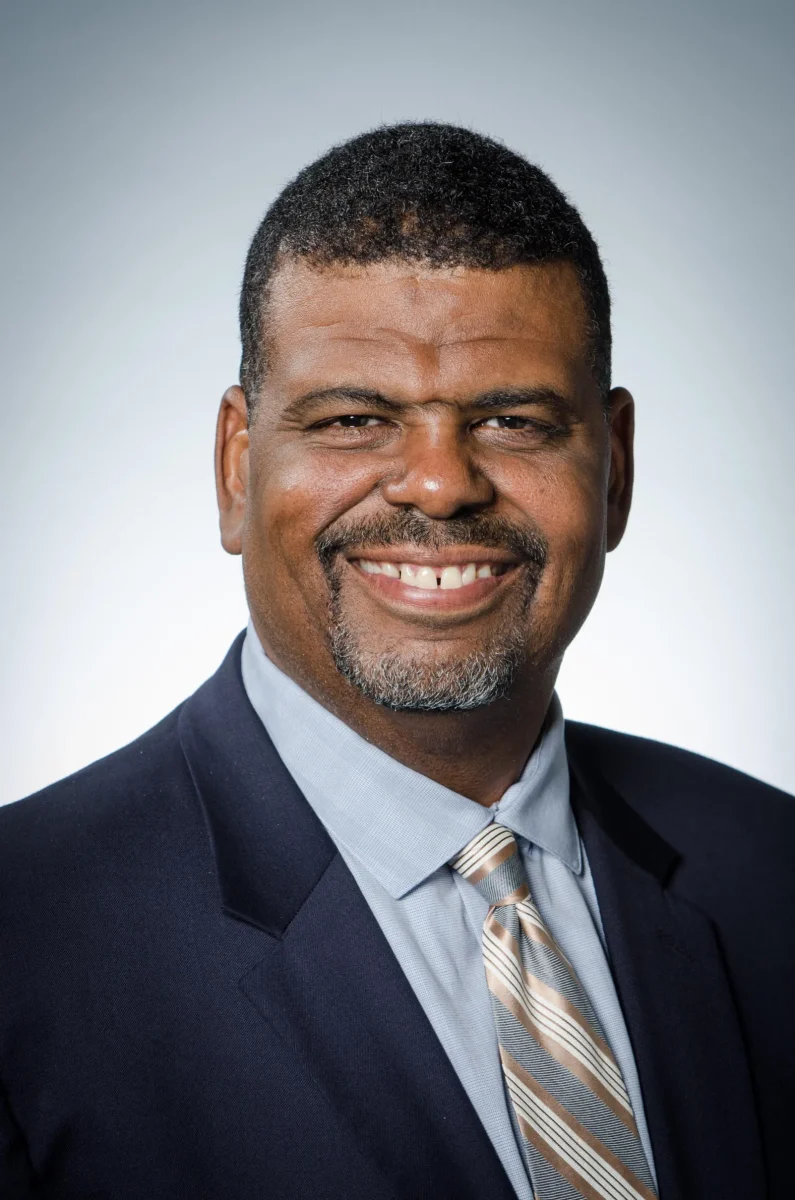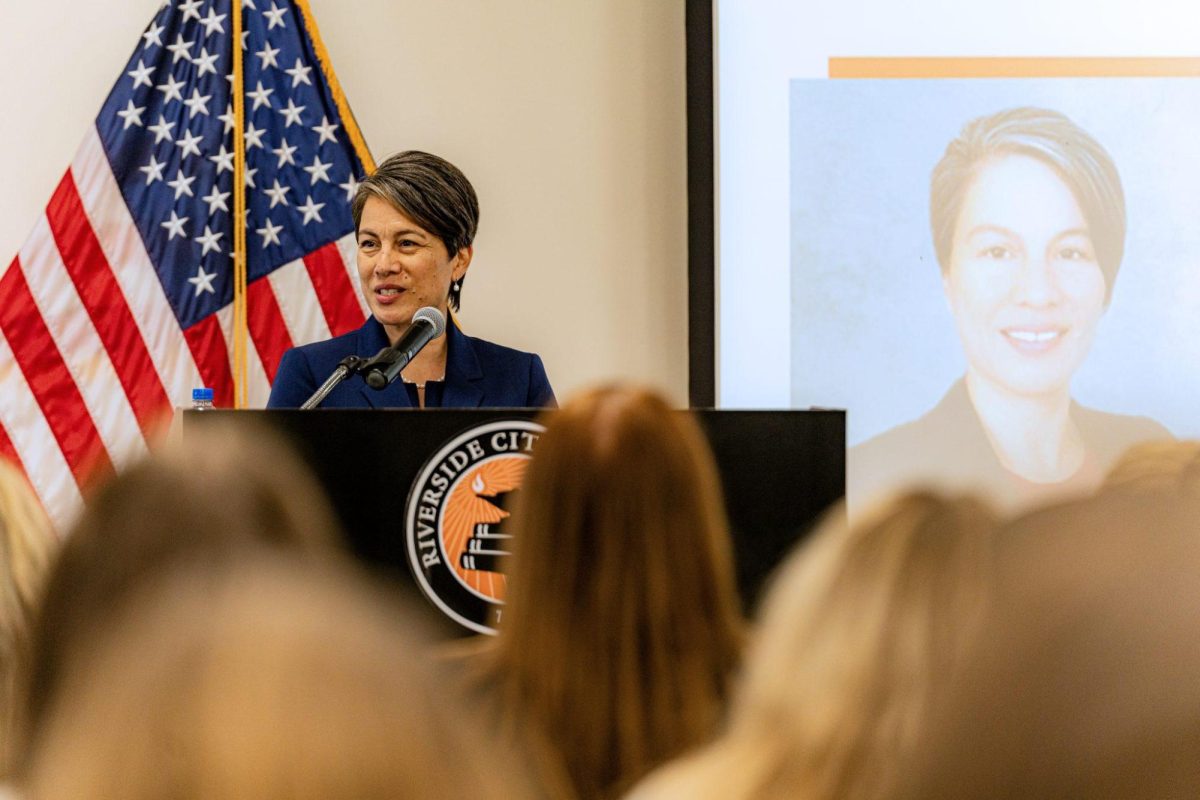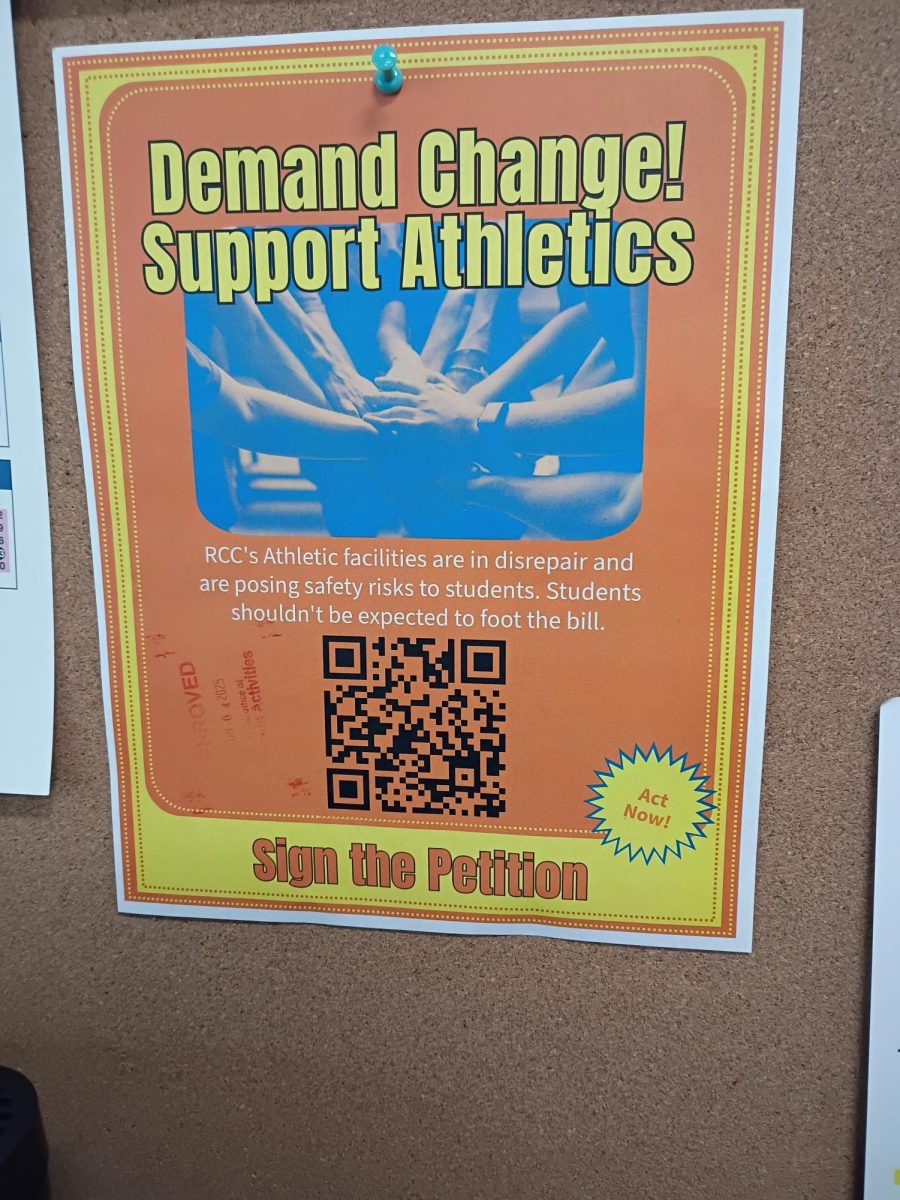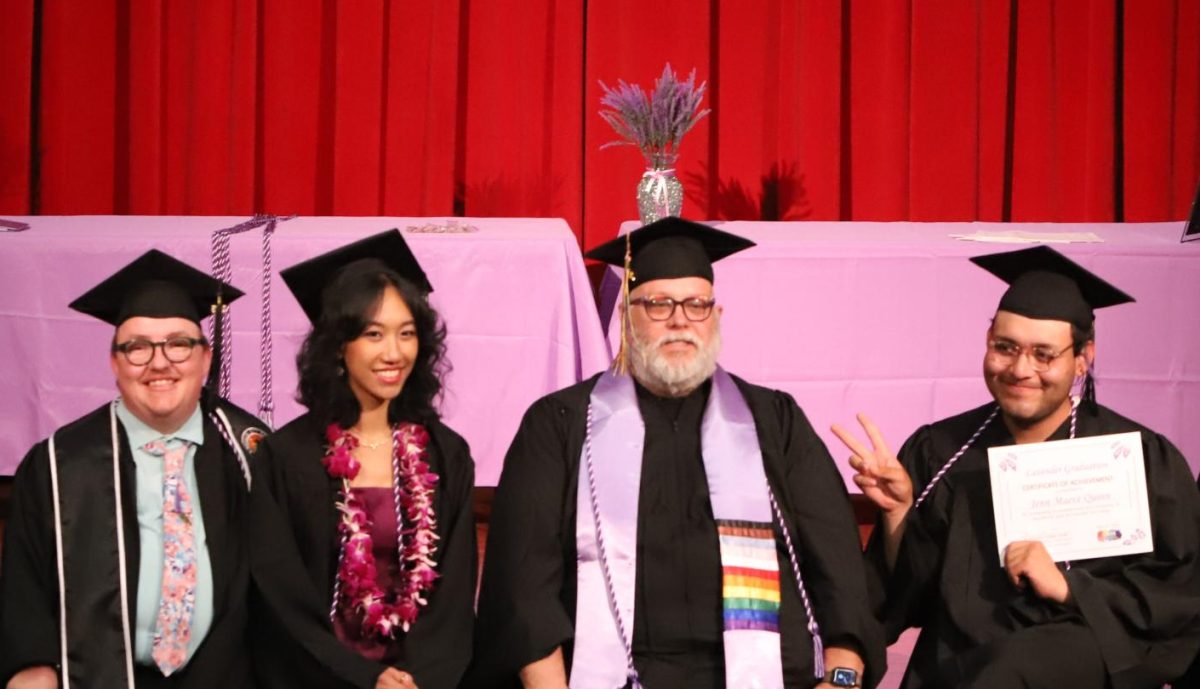
By Hector M. Zermeno
Pretty in pink. No, not the ’80s movie with teen actress Molly Ringwald, but the areas in the college campus map illustrated in pink.
These areas, known as the free speech areas, are public forums to be used for the purpose of exercising free expression by students, employees and community members, as defined by Board Policy 5550.
“It’s considered a real safe space, I can’t emphasize that enough, for everyone to say ‘this is an area where I can really share my thoughts,’” said Greg Ferrer, the interim dean of Student Services for Riverside City College.
Each campus in the Riverside Community College District has free speech areas designated by the administration.
Norco College has the Science and Technology Plaza and Moreno Valley College has the John J. Cordures, Jr. Plaza as the campus’ free speech areas.
RCC assigned the Martin Luther King, Jr. Plaza in front of the MLK, Jr. High Tech Center, the Promenade located in front of the bookstore, the Aguilar Patio located by the Student Government building and the north side of Terracina Drive across from the Quad as its public forums.
Ward Schinke, associate professor of political science, said he thinks the free speech areas are “designed to put down civil disobedience.”
“Don’t limit yourself to them,” Schinke said. “Why should it be kept calm, to the side, when we name holidays after people that said civil disobedience is required in a democracy?”
These free speech areas are the result of the 1964 Free Speech Movement led by Mario Savio and Jack Weinberg, along with other student leaders, at the University of California, Berkeley.
The Free Speech Movement was inspired by the Civil Rights Movement and fueled by the Vietnam War protests, according to “The Free Speech Movement” from the digital collection of historical documents known as Calisphere of the University of California.
The students at UC Berkeley protested a ban of on-campus political activities.
Berkeley’s Dean of Students Katherine A. Towle enacted the ban after the Slate Supplement, a course catalog, included a letter from an alleged former student that incited students to partake in civil disobedience to make demands from the university.
The ban was effective beginning Sept. 21, 1964.
Students endured arrests and suspensions, but that did not stop them from fighting for their right to demonstrate at the university.
Victory came for the movement on Jan. 4, 1965 when they held their first legal rally after Acting Chancellor Martin Meyerson designated areas at UC Berkeley as “open discussion areas.”
A full chronology of the events that took place during the Free Speech Movement can be found in the UC Berkeley website under “Free Speech Movement Chronology.”
Now, college campuses across the U.S. have free speech areas that are modeled similarly to the open discussion areas of Berkeley.
“It’s very important and vital for college discussion that we have free speech areas and people are able to protest and talk about their concerns,” said Ryan Rudolph, RCCD student trustee. “It’s everyone’s right to freely speak anywhere on campus.”
California educational codes 76120 and 66301 protect the First Amendment rights of students in public campuses.
Code 76120 gives authority to the governing board of the college to create rules and regulations for the free speech areas. The Board of Trustees is the governing board at RCCD.
Code 66301 protects the First Amendment rights of students. However, it does not protect harassment, threats or intimidation.
This code also protects employees of the college from retaliation for protecting or refusing to infringe students’ rights.
Based on these educational codes, the Board of Trustees enacted Board Policy 5550 and Administrative Procedure 5550.
BP 5550 defines who can use free speech areas, who can endorse regulations, what type of regulations can be made and it excludes student news media from these policies.
Student news media must follow BP 4600.
AP 5550 specifies the regulations for the free speech areas.
The administration cannot impose prior restraint to content unless it is illegal, harassing or discriminatory.
Distribution of literature, posting of materials and sound amplification are regulated by AP 5550.
Persons in use of the areas cannot force material upon, obstruct the path of, harass nor follow a passerby, according to AP 5550.
“If someone is yelling obscenities out there, we’d like to know who that is,” Ferrer said.
However, Eric Ridenour, an RCC student, is concerned the policies currently in place are not enough to secure the safety of students.
“I think they are horrible,” Ridenour said about the free speech areas. “(Students) need to be aware there are possibly undesirable people coming here.”
The current policies allow members of the community to use the areas as long as they are registered with the dean of Student Services.
Ferrer said that anyone in use of the areas is “encouraged” to register, especially if they will be there outside of college hours, 8 a.m. to 5 p.m., to provide campus security personnel.
Ridenour said his concern came after he experienced an encounter with a man distributing literature on Terracina Drive by the MLK, Jr. Tech Center.
The incident occurred during Club Rush in the 2015 spring semester, according to Ridenour.
The man held the literature close to Ridenour’s face while holding a “staff” to block the path of passersby.
Ridenour asked the man to step aside as he did not feel comfortable with his presence. The man then allegedly threatened Ridenour with physical violence.
Ridenour said he proceeded to call RCCD campus police who, according to him, said they could not do anything about the situation. Administration gave him the same response.
AP 5550 states that violators of regulations, such as blocking pathways and threatening students, will be made aware of their violations and may possibly be removed from the campus.
The procedure also states that Student Services and RCCD Police Department staff will be trained to handle situations like Ridenour’s.
Ferrer said Student Services does intervene when situations become disorderly.
“That oversteps the bounds of what that area should be,” Ferrer said referring to disruptive demonstrators.
Sergeant Tom Shenton of the RCCD Police Department said officers are adequately trained in board policies concerning campus safety.
Petitioners in violation are reminded that it is prohibited to restrict a person from moving freely through a path, Shenton said referencing California Penal Code 602.1.
“We’ll try to give them an opportunity to be compliant,” Shenton said.
A student can request a citizen’s arrest, if they feel their movement was restricted, where the officer will issue a citation to the offender for a court appearance, according to Shenton.
He talked about an incident, which happened a couple of weeks ago, where two groups of petitioners were arguing with each other. The officers informed them of the breach of board policy and that they could be removed from the campus, in accordance to Penal Code 626.4.
“If they are not doing peaceful business maybe they need to go somewhere else,” Shenton said. “The first thing we try to do is keep the peace.”

